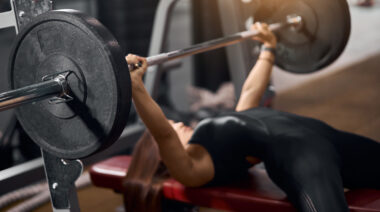Rest and recovery are critical components of any successful training program. They are also the least planned and underutilized ways to enhance performance. You may not be aware there is a difference between rest and recovery or how to properly implement them both. If you train for ten hours per week, you have 158 non-training hours or 95% of your time left for rest and recovery. Where is all of this “extra” time going and why do you walk into your workout dragging?
Most easily defined as a combination of sleep and time spent not training, rest is the easiest to understand and implement. How you sleep and spend this time is very critical.
Recovery, however, refers to techniques and actions taken to maximize your body’s repair. These include hydration, nutrition, posture, heat, ice, stretching, self-myofascial release, stress management, compression, and time spent standing versus sitting versus lying down. Recovery is multifaceted and encompasses more than just muscle repair. Recovery involves chemical and hormonal balance, nervous system repair, mental state, and more.
We have different systems that need to recover. These include hormonal, neurological, and structural. Our structural system includes muscles, tendons, ligaments, and bones. Muscles recover the quickest because they receive direct blood flow. Tendons, ligaments, and bones receive indirect blood flow and therefore can take longer to recover and be more susceptible to overtraining stress.
For most, the goal should not be set for perfection or include exactly correct levels of each factor – leave that for professional athletes to strive after. Our goal is to prioritize life and maximize performance without personal sacrifice. Kick back, relax, and enjoy an evening out with friends. Order your favorite beer and get the ribs as this may mentally benefit you more, allow you to unwind, and put you in a better place to perform as opposed to another solitary night of broccoli and chicken. Life for an athlete who sacrifices everything for the sake of performance can very lonely and tiresome.
A balanced combination of rest and recovery along with proper diet and exercise should be a part of any fitness regimen. Unless you are competing at an elite level, you should follow the follow the 80/20 rule. Eighty percent of your time can be spent focusing on diet and exercise, while twenty percent should be left for enjoying life. In other words, don’t let yourself get too wrapped up in perfection.
Below we will break down the subcomponents of rest and recovery to provide you with better insight on how to improve performance and overall quality of life. A healthy and happy athlete not only performs better, but has the ability to give time and energy to others also.
Elements of Rest and Recovery: 1. Sleep
Sleep is the most important time to recover. Adequate levels of sleep help to provide mental health, hormonal balance, and muscular recovery. You need to get enough sleep, which is between seven to ten hours for most athletes. Everyone has individual needs based on their lifestyle, workouts, and genetic makeup.
- Hours slept before twelve at night are proven to be more effective than those slept after.
- Sleep in the most natural setting possible, with minimal to no artificial lights.
- Wakeup with the sun if possible.
- Fresh air and cooler temperatures help to improve the quality of sleep.
Elements of Rest and Recovery: 2. Hydration
Drinking adequate amounts of water is critical to health, energy, recovery, and performance. Athletes tend to be very attentive to hydration levels close to and during competitions, but keeping that awareness during training and recovery times can make just as large an impact. Water helps all of our functions. A few examples are more efficient nutrient uptake, lower levels of stress on the heart, improved skin tone, and better hair quality.
The simplest way to check hydration is to look at your pee. If it is clear to pale yellow you are hydrated. The darker and more color in your pee the less hydrated you are and more water you need to drink.
- Water is the best way to hydrate.
- Sports drinks are only needed for before, during, and after strenuous training or completion, don’t drink them simply because they taste good.
- Flavorings, Crystal Lite, and other additives simply give you system more to process and cause it further strain. Stick to adding a lemon or lime.
Elements of Rest and Recovery: 3. Nutrition
Everything you eat has the ability to help heal your body, or to poison it. This may sound strong, but alcohol and processed foods contain toxins and are harmful to the body. I do not like to recommend a specific diet, but eating clean and balanced meals in moderation is proven to be effective to remain healthy and increase performance. Dairy and wheat are processed differently by everyone and you need to educate yourself on these topics and how they personally affect you. Some people process these food items very well and have no side effects, while other people have slight to severe autoimmune reactions. Start with a paleo diet as your base template and add to it based on your experiences, not what you read by others.
Food in our society goes far beyond fueling the body, so it is not always such a simple choice. We go out to dinner, and most social events have food. The key is achieving balance so you get the results you want, but can also function as a normal person and enjoy life.
- Create a meal plan and shop ahead for the week.
- Have healthy snacks readily available that you enjoy.
- Plan ahead for dinner out by helping to pick the place you’re eating and looking at the menu ahead of time.
Elements of Rest and Recovery: 4. Posture
This is one of the least focused on areas in the American culture. We on average spend more time sitting than any other country in the world, and as a general trend have bad posture. This is not a restful position; sitting or standing with bad posture is harmful. It can lead to back or neck pain, specifically for those with desk jobs.

- Find a chair that is ergonomically correct.
- If you struggle to sit upright use a foam roller or ball in your back to give you a tactile cue and help force good posture.
- Don’t lean to one side or on an object for support while standing.
Elements of Rest and Recovery: 5. Stretching
You need enough flexibility to move well and remain pain free. Include dynamic stretching in your warm-ups while saving static stretching for after your workouts. Go through my previous articles that included screens on the squat, hip hinge, and ankle movement. Attempt to self-identify tight areas and work on them. Don’t get caught doing the exact same stretches you’ve always done. If you don’t know any new variations look through the previous articles, attend a yoga class, or check out Kelly Starett’s Mobility WOD.
Elements of Rest and Recovery: 6. Self-Myofascial Release
Tight muscles and trigger points sometimes need assistance to return to healthy normal tissue. Read my article on foam rolling for more information.
Elements of Rest and Recovery: 7. Heat, Ice, and Compression
Use these techniques for recovering from injuries or a very stressful training or racing experience such as a road marathon or the CrossFit Games.
Spending some additional time focusing on rest and recovery can pay dividends beyond additional training time. It’s essentially legal performance enhancement, yet people don’t take advantage of it because it takes time. Dedicating additional time primarily to the three categories of sleep, hydration, and nutrition will increase your output ability, decrease recovery time, and lower your risk of injury. It’s the trifecta that all coaches and athletes aim for, yet most people miss the mark because they don’t want to dedicate time to the little things that matter most. Don’t ignore your body until it becomes too late and you’re forced to take unnecessary time off due to injury, burnout, or worse.
Photos courtesy of Shutterstock.






